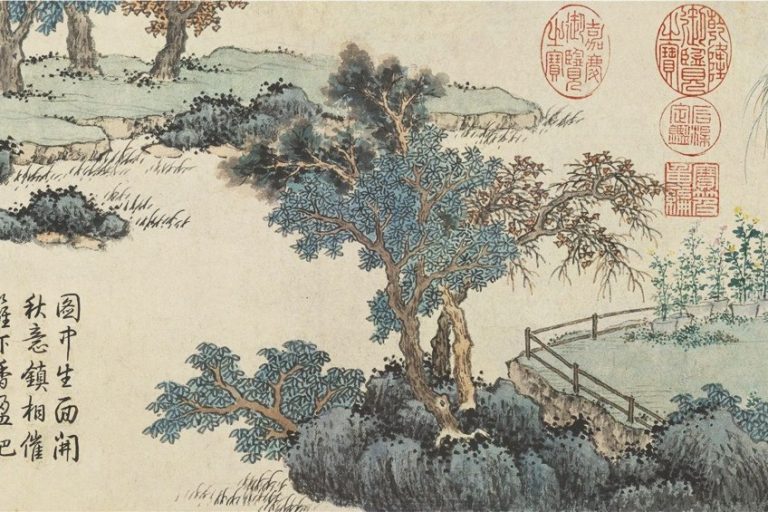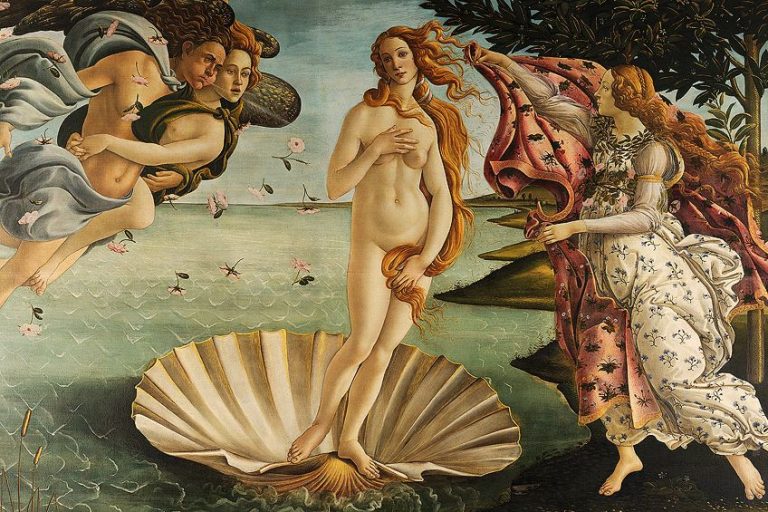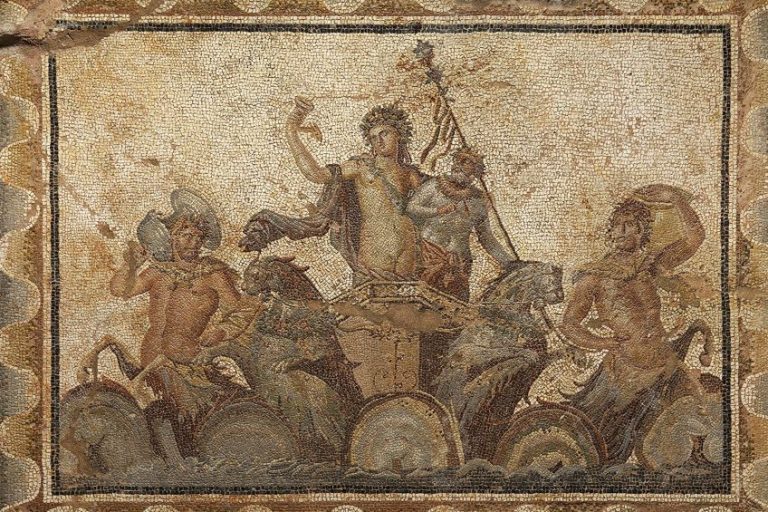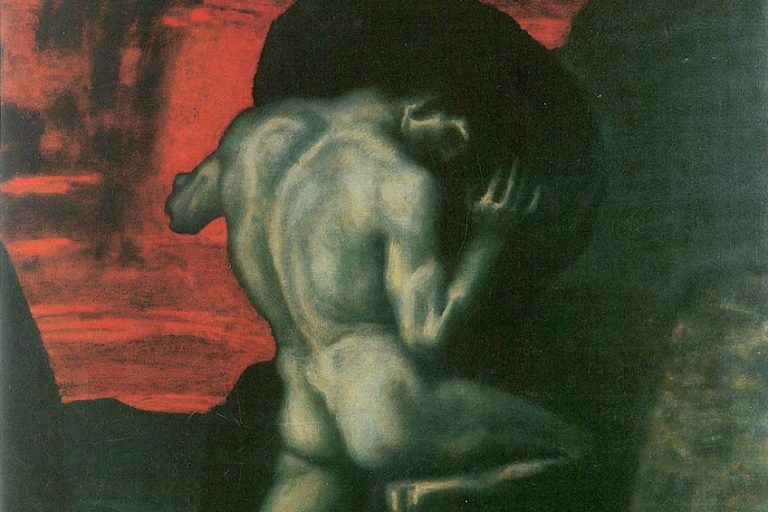Afrofuturism – Fusing African Heritage and Science Fiction
In the realm of contemporary art and cultural discourse, Afrofuturism stands as a captivating and visionary movement that has garnered widespread attention. Defined by its distinctive fusion of African heritage, speculative fiction, and technological innovation, Afrofuturism artists have crafted a compelling tapestry of Afrofuturism artworks that transcend conventional boundaries and offer profound insights into the African diasporic experience. But what is Afrofuturism, and who coined the term Afrofuturism? These questions serve as the crux of our exploration into this transformative artistic movement, as we delve into its origins, evolution, and the profound impact it has had on the worlds of art, music, literature, and beyond.
What Is Afrofuturism?
Afrofuturism is an artistic and cultural movement that has captured the imagination of scholars, artists, and audiences worldwide. Rooted in the African diasporic experience, this movement has evolved into a powerful force, weaving together elements of science fiction, fantasy, African traditions, and technology. Emerging from the realms of music, literature, visual arts, and film, Afrofuturism has transcended the confines of traditional artistic categories and continues to shape contemporary discourse in profound ways. In this article, we will embark on a journey to explore the essence of Afrofuturism, its historical origins, key themes, influential figures, and the lasting impact it has made on our collective understanding of identity, cultural heritage, and the future.
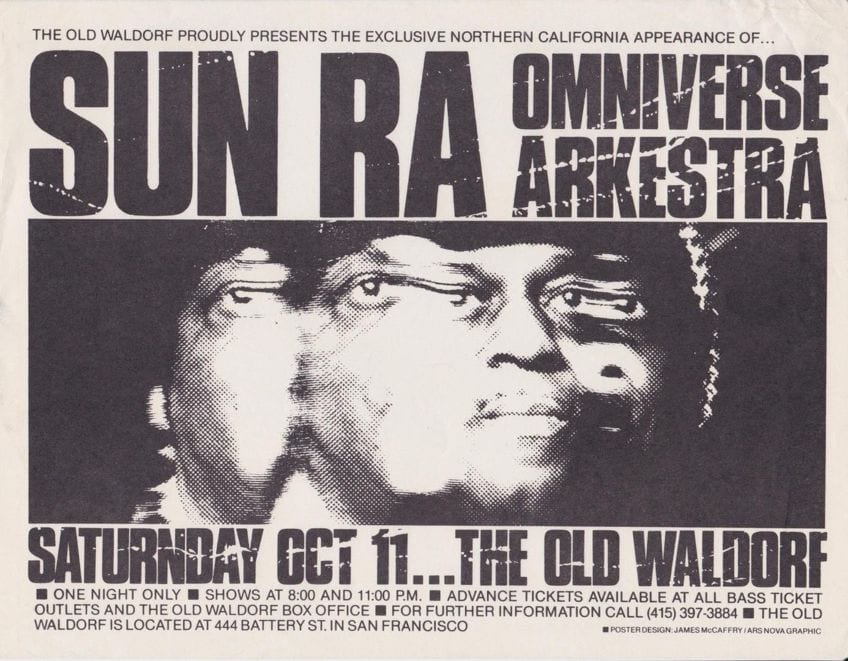
The Origins of Afrofuturism: Who Coined the Term Afrofuturism?
To understand Afrofuturism, one must first grasp its historical roots. The term itself is believed to have been coined by cultural critic Mark Dery (1959 – Present) in his 1994 essay Black to the Future, although the movement’s conceptual foundations predate this coinage by several decades. Afrofuturism’s origins can be traced back to the early to mid-20th century, a time when African Americans were grappling with issues of identity, racial discrimination, and the legacy of slavery.
Pioneering artists such as Sun Ra (1914 – 1993), a jazz musician and bandleader, and George Clinton (1941 – Present), the mastermind behind the funk collective Parliament-Funkadelic, laid the groundwork for Afrofuturism with their innovative music and personas.
Sun Ra, in particular, embraced the concept of space travel and extraterrestrial themes in his music and public persona, blurring the lines between science fiction and reality. It was also a reflection of his desire to elevate African heritage and spirituality while envisioning a future that transcended earthly limitations. This blurring of the lines between science fiction and reality allowed Afrofuturist artists to engage with themes of identity, spirituality, and liberation in a way that resonated deeply with the African-American experience.
The Socio-Political and Art History Context of Afrofuturism
The emergence of Afrofuturism was deeply intertwined with the socio-political and art history context of the early to mid-20th century in the United States. During this period, African Americans were grappling with the complex legacy of slavery, ongoing racial discrimination, and the quest for civil rights and self-determination. These pressing issues created a fertile ground for artistic and intellectual movements that sought to address and transcend these challenges.
One crucial element of this context was the Civil Rights Movement, which started accelerating in the 1950s and 1960s. This social and political movement aimed to dismantle racial segregation, challenge systemic racism, and secure equal rights for African Americans. It was marked by protests, activism, and cultural expressions that resonated deeply with the African-American community.

In the art world, the Harlem Renaissance of the 1920s had already laid the groundwork for a cultural renaissance within the African-American community. This period saw a flourishing of African-American literature, music, visual arts, and intellectual discourse centered in Harlem, New York. Figures like Langston Hughes (1901 – 1967), Zora Neale Hurston (1891 – 1960), and Duke Ellington (1899 – 1974) were instrumental in shaping the Harlem Renaissance, which celebrated black culture and identity.
Against this backdrop of social and artistic ferment, Afrofuturism began to take shape. Additionally, the broader cultural landscape of the 1960s and 1970s was marked by the rise of science fiction in popular culture. Films like Stanley Kubrick’s 2001: A Space Odyssey (1968) and the Star Trek (1966-1969) series presented visions of the future that captivated audiences worldwide.
Afrofuturist artists drew inspiration from these narratives, infusing them with their unique perspectives and experiences.
Key Themes in Afrofuturism
Afrofuturism delves deep into the rich tapestry of African and African-American heritage while seamlessly weaving elements of science fiction, fantasy, and technology into its narratives. Within this captivating movement, several key themes emerge, offering profound insights into the complex experiences, hopes, and dreams of people of African descent.
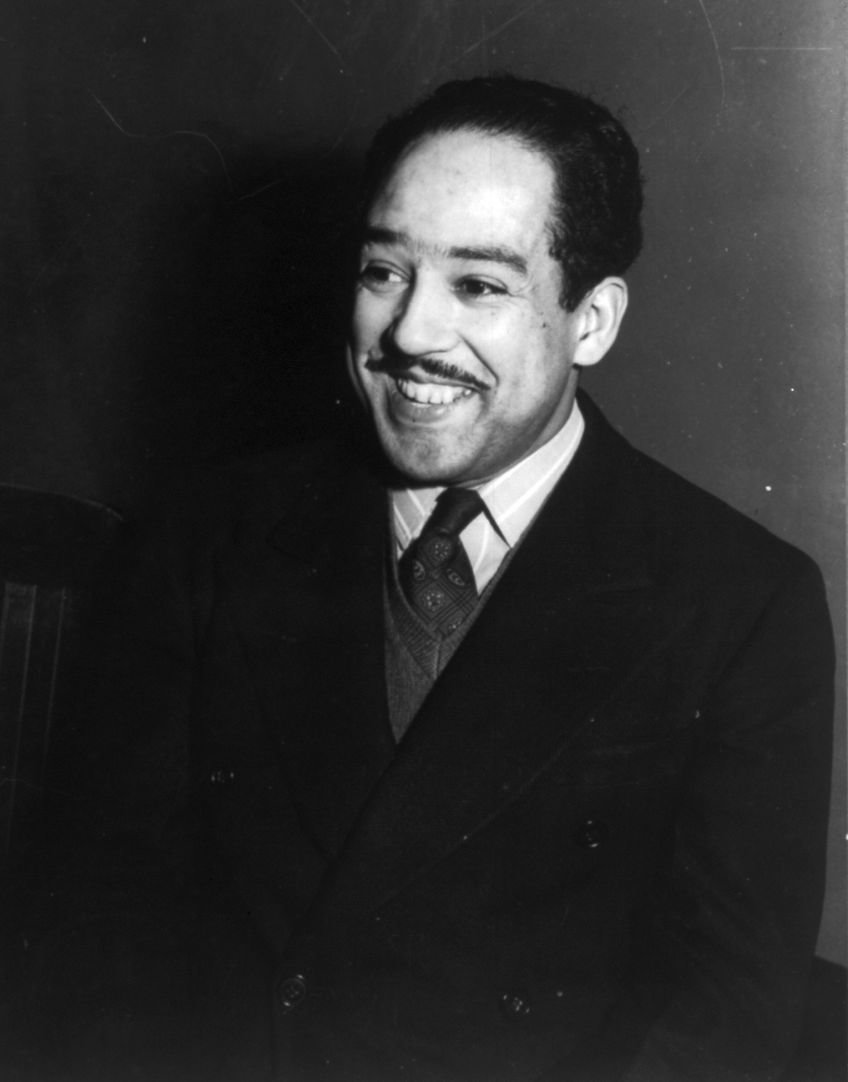
Reimagining the Past and Future
At its heart, Afrofuturism invites artists and thinkers to embark on a transformative journey through time and space. It challenges the dominant narratives of oppression and historical trauma that have marred the African and African American experience. Instead, Afrofuturism envisions alternative histories where the shackles of colonialism and slavery never existed, allowing African cultures to flourish unburdened by the weight of their painful past. Simultaneously, it dares to dream of a future where individuals of African descent take center stage in shaping a technologically advanced world.
In this way, Afrofuturism serves as a powerful tool for redefining historical narratives and reshaping the collective consciousness.
Diaspora and Identity
One of the most profound and recurring pieces in Afrofuturism is the investigation of identity and belonging within the vast African diaspora. Afrofuturist creators delve into the intricate complexities of how individuals of African descent navigate their identities in a world marked by displacement, migration, and cultural hybridity. This theme is a reflection of the real-world experiences of the African diaspora, where people are often caught between their ancestral roots and the diverse societies in which they find themselves. Afrofuturism provides a platform to explore and celebrate the rich diversity of identities that exist within this global community.

Technology and Empowerment
Technology, both real and imagined, serves as a prominent and recurring motif in Afrofuturism. It is often depicted as a marker of empowerment and freedom. Whether through encounters with advanced alien technology or the creation of innovative devices and inventions, Afrofuturist characters and artists utilize technology as a means to transcend limitations and assert agency over their destinies.
This theme reflects a desire for self-empowerment and the belief that technological innovation can be a catalyst for change and progress.
Cosmic and Mythological Elements
Many Afrofuturist works draw inspiration from the rich tapestry of African cosmologies and folklore. These cosmic and mythological elements are seamlessly interwoven with futuristic settings, creating narratives that bridge the past, present, and future. From celestial deities to ancient prophecies, Afrofuturism blends the mystical and the technological, offering a unique perspective on the interconnectedness of human history and the cosmos. This fusion of myth and science fiction not only adds depth to Afrofuturist storytelling but also reinforces the importance of cultural heritage and spirituality in shaping future narratives.

Afrofuturism Artists and Thinkers
The Afrofuturist movement has been profoundly shaped by a cadre of visionary artists, writers, musicians, and thinkers, each contributing their unique perspective and creativity to this transformative cultural phenomenon. These influential figures have not only ignited imaginations but have also challenged societal norms and redefined the boundaries of artistic expression. In this section, we will delve into the biographies and significant contributions of some of the most notable individuals who have left an indelible mark on Afrofuturism. We will also be exploring their groundbreaking works and the enduring impact they have had on the movement and beyond.
Sun Ra (1914 – 1993)
| Date of Birth | May 22, 1914 |
| Date of Death | May 30, 1993 |
| Place of Birth | Birmingham, Alabama, United States |
| Nationality | American |
Born Herman Poole Blount in Birmingham, Alabama, Sun Ra, an American jazz musician and bandleader, forever altered the musical and philosophical landscape of Afrofuturism. His avant-garde jazz compositions and cosmic persona laid the very foundation upon which Afrofuturist music and philosophy thrive.
Sun Ra’s visionary fusion of ancient African cosmology with futuristic imagery challenged conventional notions of space and time, inspiring countless artists to explore new dimensions within their work.

George Clinton (1941 – Present)
| Date of Birth | July 22, 1941 |
| Age | 82 years old |
| Place of Birth | Kannapolis, North Carolina, United States |
| Nationality | American |
George Clinton, a musical maverick hailing from Kannapolis, North Carolina, USA, emerged as the mastermind behind the legendary Parliament-Funkadelic collective. His innovative “P-Funk” sound melded funk, psychedelia, and Afrofuturist themes, creating a musical mythology that pushed artistic boundaries.
With iconic albums like Mothership Connection (1975), Clinton’s funkadelic journey through the cosmos not only brought a unique auditory experience but also challenged societal norms and inspired Afrofuturist creativity across various media.
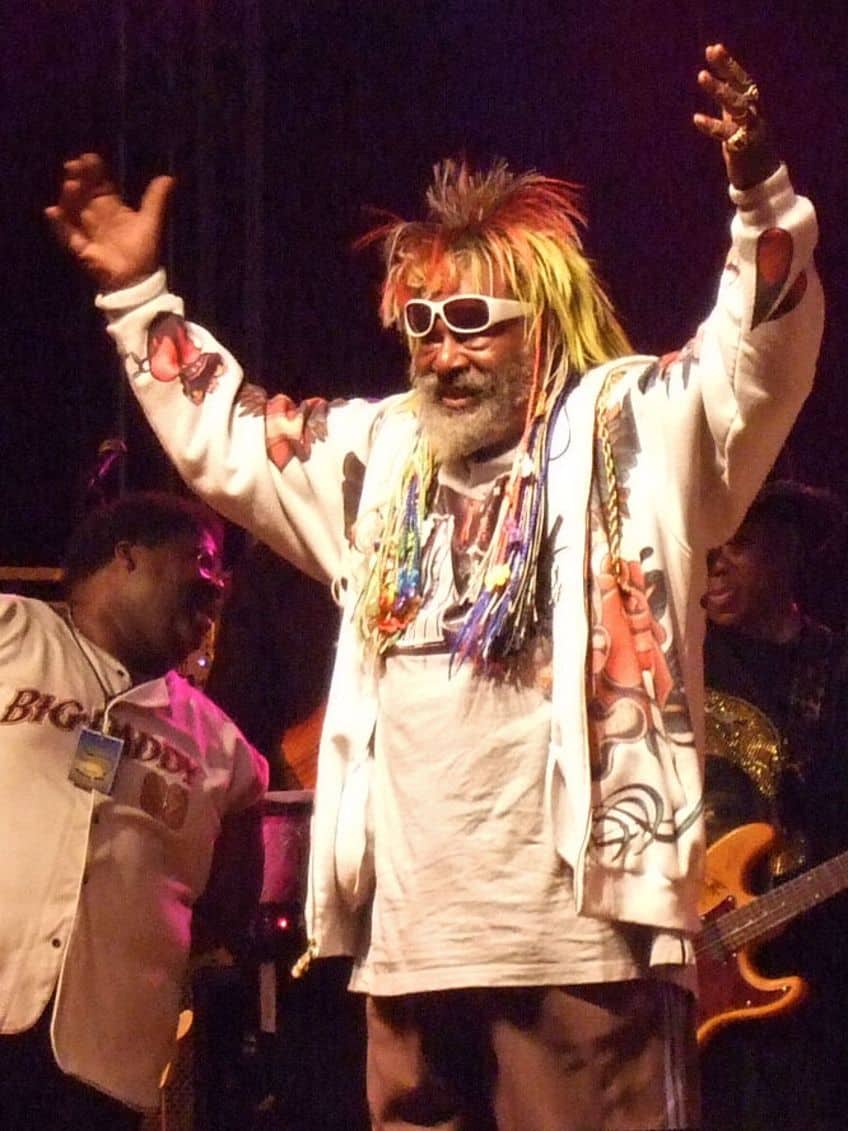
Octavia E. Butler (1947 – 2006)
| Date of Birth | June 22, 1947 |
| Date of Death | February 24, 2006 |
| Place of Birth | Pasadena, California, United States |
| Nationality | American |
Octavia E. Butler, an American science fiction luminary, left an indelible mark on the genre through her insightful explorations of race, gender, and power. Born in Pasadena, California, Butler’s profound impact on Afrofuturist literature is epitomized by her groundbreaking works, including Kindred (1979). This novel, a time-traveling narrative that confronts the horrors of slavery, challenges readers to confront the darkest chapters of history.
The Patternist (1976-1984) series further showcases her ability to craft complex, socially relevant tales within a speculative framework, solidifying her reputation as a pioneer of Afrofuturism.

Janelle Monáe (1985 – Present)
| Date of Birth | December 1, 1985 |
| Age | 37 years old |
| Place of Birth | Kansas City, Kansas, United States |
| Nationality | American |
Janelle Monáe, a contemporary musician and performer, has carved her own niche in Afrofuturism with her distinctive albums, including The ArchAndroid (2010) and Dirty Computer (2018). Born in Kansas City, Kansas, Monáe’s work is deeply steeped in Afrofuturist themes, addressing issues of identity, technology, and freedom.
Through her music and visually captivating narratives, she explores the complexities of being a black woman in the modern world, blending futuristic aesthetics with social commentary to create a resonant and thought-provoking body of work.

Afrofuturism Artworks
Within the vibrant world of Afrofuturism, a captivating realm of creativity unfolds through a multitude of Afrofuturism artworks. These captivating creations serve as portals to alternate realities, where the past, present, and future coalesce in a symphony of visionary storytelling.
In this section, we look at some of the famous Afrofuturism artworks.
Untitled (One Eyed Man or Xerox Face) (1982) by Jean-Michel Basquiat
| Title | Untitled (One Eyed Man or Xerox Face) |
| Date | 1982 |
| Medium | Acrylic, spray paint, oilstick, and Xerox collage on panel |
| Dimensions (cm) | 182.9 × 121.9 |
| Location | Christie’s Hong Kong, Hong Kong, China |
Jean-Michel Basquiat’s Untitled (One Eyed Man or Xerox Face) is a striking artwork that encapsulates the raw energy and visual complexity characteristic of his oeuvre. Painted in 1982, this large-scale canvas showcases Basquiat’s signature fusion of text and image, layered with symbolism and a sense of urgency.
Artist Abstract
| Date of Birth | 22 December 1960 |
| Date of Death | 12 August 1988 |
| Place of Birth | Brooklyn, New York, United States |
| Periods | Contemporary art, Neo-expressionism, and Primitivism |
Jean-Michel Basquiat, an iconoclastic force in the world of contemporary art, remains an enigmatic figure whose work continues to captivate and inspire audiences worldwide. Born on December 22, 1960, in Brooklyn, New York, Basquiat’s brief yet prolific career left an indelible mark on the art world before his untimely passing on August 12, 1988.
Basquiat’s art is proof of the transformative force of creativity and the intersection of urban street culture with high art. Emerging from the graffiti and punk scenes of New York City in the late 1970s, Basquiat’s early works were marked by their raw energy and fearless exploration of themes such as race, identity, and social injustice. Central to Basquiat’s oeuvre is his signature fusion of text and image. His paintings are a visual cacophony of words, symbols, and figures, often layered with references to history, pop culture, and personal experiences.
This amalgamation of elements invites viewers to decipher the complex narratives that underlie his art, blurring the lines between written language and visual expression.
At the core of Basquiat’s work is a profound engagement with African, African American, and Caribbean cultural heritage. He grapples with the legacy of slavery, colonialism, and systemic racism, using his art as a medium to confront these deeply rooted issues. Through the recurring motif of the crown, Basquiat explores themes of power, authority, and the self-imposed burdens of identity.
Basquiat’s impact extends far beyond the canvas. His art has transcended the boundaries of the art world, influencing contemporary culture, fashion, music, and film. His collaborations with artists like Andy Warhol (1928-1987) further cemented his place in art history, challenging notions of race, celebrity, and artistic collaboration.
The legacy of Jean-Michel Basquiat endures as a testament to the transformative potential of art, the power of storytelling, and the ability of a singular artist to shape and redefine the cultural zeitgeist. His work continues to resonate with audiences, serving as a reminder of the enduring relevance of his message and the timeless power of artistic expression.
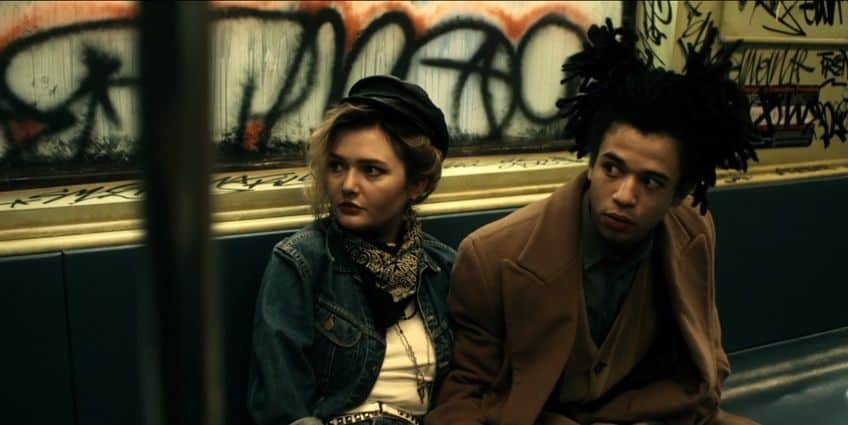
Analysis
The composition is dominated by a central figure, a skeletal and one-eyed man rendered in black and white. His presence is both haunting and arresting, occupying the foreground with a magnetic force. The stark contrast of the figure against a vibrant red background adds to the intensity of the image.
Basquiat’s use of text is a defining feature of this artwork. The figure’s body is covered in handwritten phrases, words, and symbols. The words “Xerox Face” are prominently scrawled across the top, blurring the line between portraiture and written expression.
The text appears frenetic, as if pulled directly from the painter’s flow of consciousness.
Surrounding the central figure are various symbols and motifs. Crowns, skulls, and skeletal elements are recurring themes in Basquiat’s work and are present here, hinting at themes of power, mortality, and identity.
Basquiat’s Untitled (One Eyed Man or Xerox Face) delves into themes of identity and alienation. The one-eyed man, a recurring motif in his work, symbolizes a sense of otherness and marginalization. The use of the term “Xerox Face” suggests a dehumanizing process of duplication and erasure, reflecting the devaluation of black identity in a society marked by racial inequality.
Basquiat’s use of text is a commentary on the impact of language on shaping and defining identity. By layering words and symbols, he challenges conventional narratives and invites viewers to engage in a deeper exploration of meaning. The fractured and disjointed text mirrors the fragmented nature of identity for marginalized communities. Basquiat’s art often serves as a social critique, addressing issues of racism, power structures, and cultural appropriation.
Untitled (One Eyed Man or Xerox Face) is no exception, offering a searing commentary on the dehumanizing effects of a society that marginalizes and objectifies individuals based on race.
Mountain of Prayer (2014) by Wangechi Mutu
| Title | Mountain of Prayer |
| Date | 2014 |
| Medium | Collage painting on vinyl |
| Dimensions (cm) | 77.5 x 90.2 |
| Location | Unknown |
Mountain of Prayer is a captivating Afrofuturism artwork created by the internationally acclaimed Kenyan-American artist Wangechi Mutu in 2014. This striking collage combines a variety of media and materials to construct a visually rich and conceptually layered narrative. Mutu’s work invites viewers to explore themes of identity, transformation, and the African diaspora through a complex and intricate composition.
Artist Abstract
| Date of Birth | 22 June 1972 |
| Age | 51 years old |
| Place of Birth | Nairobi, Kenya |
| Periods | Contemporary art and Afrofuturism |
Wangechi Mutu is a visionary artist whose work defies categorization, blending diverse media and concepts into a rich tapestry of visual storytelling. Born in Nairobi, Kenya, Mutu has emerged as a prominent figure in contemporary art, celebrated for her thought-provoking exploration of identity, the African diaspora, and the complexities of femininity. Mutu’s artistic practice is characterized by its fearless engagement with themes of cultural hybridity, colonialism, and the transformative power of imagination.
Her use of collage, drawing, sculpture, and video creates a multidimensional experience that challenges viewers to reconsider preconceived notions and narratives.
The heart of Mutu’s work lies in its ability to navigate the intersection of African and Western influences, dismantling stereotypes and offering new perspectives on issues such as race, gender, and power. Her figures, often depicted as powerful and dynamic women, evoke a sense of resilience and defiance while embracing their vulnerability and humanity.
Through her Afrofuturist lens, Mutu invites us to imagine a world where the boundaries of identity are fluid, where history can be reimagined, and where the future holds limitless possibilities. Her art is evidence of the continuing power of creativity, storytelling, and the African diaspora’s rich cultural heritage.
Wangechi Mutu’s work has been exhibited globally, earning her critical praise and honor as a trailblazer in contemporary art. Her ability to transcend artistic disciplines and engage with urgent socio-political themes makes her a vital voice in the evolving conversation about art, identity, and the human experience.
Analysis
Mountain of Prayer is a collage of found images, printed materials, and painted elements. The artwork’s fragmented nature reflects the idea of a fragmented identity experienced by many within the African diaspora. Mutu’s skillful layering and juxtaposition of diverse materials create a visually dynamic and textured composition. The central figure in the artwork is a striking female form.
Her body is adorned with a vibrant patchwork of patterns, fabrics, and textures, symbolizing the diverse cultural influences that shape the diaspora.
The figure’s posture suggests strength and resilience, while her elongated limbs reach out into the mouth of an unknown creature unknown. Above the central figure, strange birds are seen. These elements evoke a sense of cosmic exploration and spiritual connection, as if they are representations of gods. Alongside the strange animal creature, they imply a journey that transcends earthly boundaries, echoing the Afrofuturist theme of imagining alternative futures and spaces.
Throughout the artwork, there are motifs that suggest transformation and metamorphosis. Wings, feathers, and other symbolic elements hint at the possibility of evolution and transcendence. These symbols underscore the idea of the diaspora as a transformative journey of self-discovery and empowerment.
Mountain of Prayer delves into the multifaceted nature of identity within the African diaspora. The patchwork figure represents the amalgamation of cultures, experiences, and histories that shape the identities of people of African descent around the world. Mutu’s use of collage reflects the idea that identity is not monolithic but rather a complex mosaic.
The central figure’s posture and the presence of celestial elements convey a message of empowerment and resilience, as well as prayer and reverence. Despite the challenges and adversities faced by the diaspora, there is a sense of inner strength and the potential for transcendence. The artwork celebrates the resilience of individuals and communities within the diaspora.
Impact and Legacy of Afrofuturism
Afrofuturism’s profound impact transcends the confines of art and entertainment, radiating throughout society and culture. It has ignited critical discussions that confront deeply entrenched issues of race, identity and the trajectory of humanity’s future. By challenging conventional notions of blackness and rewriting the narratives of African and African American experiences, Afrofuturism has become a transformative force that empowers individuals to assert their identities and claim their rightful place in shaping the world of tomorrow.
In addition to its intellectual influence, Afrofuturism has had a profound artistic ripple effect.
Its innovative spirit has permeated multiple creative disciplines, breathing new life into music, literature, fashion, visual arts, and beyond. Musicians, writers, and artists across the globe have drawn inspiration from Afrofuturist themes, infusing their works with a fresh perspective that transcends borders and resonates with diverse audiences.

Moreover, Afrofuturism serves as a rallying cry for marginalized communities, inviting them to participate in the collective dream of a more inclusive future. It encourages individuals from various backgrounds to envision a world where their voices, stories, and contributions are celebrated and acknowledged. In doing so, Afrofuturism offers not only a glimpse into possible futures but also a powerful means of shaping those futures, where diversity, creativity, and empowerment reign supreme.
In the grand tapestry of cultural movements, Afrofuturism stands as a testament to the enduring power of imagination and the ability of art to challenge, inspire, and provoke change. As it continues to evolve and expand, Afrofuturism invites us all to embark on a journey where the boundaries of possibility are limited only by our collective creativity and the dreams that reside within us.
In closing, the vibrant world of Afrofuturism, forged by visionary Afrofuturism artists through their transcendent Afrofuturism artworks, stands as a testament to the boundless potential of human imagination. Emerging from the depths of historical struggle and cultural diaspora, Afrofuturism not only reimagines the past and future but also reshapes our very understanding of identity, power, and technology. While Mark Dery may have coined the term “Afrofuturism,” its roots run deep in the works of pioneers like Sun Ra and George Clinton, who boldly ventured into uncharted sonic and visual realms. Today, artists like Janelle Monáe and Wangechi Mutu carry this torch forward, illuminating the path to a future where creativity knows no bounds, and the narratives of the African diaspora are celebrated and amplified. Afrofuturism is not merely a genre; it is a transformative force that continues to shape the artistic landscape, inspire critical discourse, and beckon us all to envision a world where the possibilities are as limitless as the cosmos itself.
Frequently Asked Questions
What Is Afrofuturism?
Afrofuturism is a cultural and artistic movement that explores the intersection of African and African-American culture with science fiction, fantasy, technology, and speculative fiction. It encompasses a diverse range of creative expressions, including literature, music, visual arts, film, and fashion. At its core, Afrofuturism challenges traditional narratives of the African diaspora by reimagining historical experiences, envisioning alternative futures, and celebrating the richness of African cultural heritage. It often delves into themes of identity, empowerment, and the role of marginalized communities in shaping the world of tomorrow. Afrofuturism artists and thinkers employ imaginative storytelling and aesthetics to bridge the gap between the past, present, and future, offering a platform for marginalized voices and narratives to thrive.
Who Coined the Term Afrofuturism?
The term Afrofuturism is believed to have been coined by cultural critic Mark Dery in his 1994 essay titled Black to the Future. Dery’s essay explored the intersection of African and African-American culture with science fiction, technology, and the innovative reimagining of both past and future narratives. This term has since become central to discussions about a cultural and artistic movement that spans various media and disciplines, inspiring Afrofuturism artists and thinkers worldwide.
What Are the Values of Afrofuturism?
The values of Afrofuturism encompass a celebration of cultural diversity, the reclamation of African heritage, and a commitment to challenging social and racial norms. Afrofuturism places a strong emphasis on empowerment and self-determination, encouraging individuals and communities, particularly those of African descent, to envision a future where their voices are heard, their stories are told, and their identities are celebrated. It values creativity, innovation, and the power of imagination to shape more inclusive and equitable narratives. Additionally, Afrofuturism values a sense of connection to the cosmos and the idea that the past, present, and future are interconnected, fostering a sense of continuity and resilience in the face of historical adversity.
What Is Afrofuturism’s Role in Africa?
In Africa, Afrofuturism plays a pivotal role in fostering a reconnection with cultural roots, celebrating the continent’s diverse heritage, and envisioning alternative narratives for the future. It serves as a platform for African artists, writers, and thinkers to challenge stereotypes, reshape historical narratives, and assert their identities in a rapidly changing world. Afrofuturism in Africa is not only a means of artistic expression, but also a tool for addressing pressing issues such as colonialism’s legacy, social justice, and technological advancement. It inspires a sense of agency and self-determination, encouraging Africans to actively shape their own destinies while embracing the continent’s rich cultural tapestry as a source of strength and creativity.
Nicolene Burger is a South African multi-media artist, working primarily in oil paint and performance art. She received her BA (Visual Arts) from Stellenbosch University in 2017. In 2018, Burger showed in Masan, South Korea as part of the Rhizome Artist Residency. She was selected to take part in the 2019 ICA Live Art Workshop, receiving training from art experts all around the world. In 2019 Burger opened her first solo exhibition of paintings titled, Painted Mantras, at GUS Gallery and facilitated a group collaboration project titled, Take Flight, selected to be part of Infecting the City Live Art Festival. At the moment, Nicolene is completing a practice-based master’s degree in Theatre and Performance at the University of Cape Town.
In 2020, Nicolene created a series of ZOOM performances with Lumkile Mzayiya called, Evoked?. These performances led her to create exclusive performances from her home in 2021 to accommodate the mid-pandemic audience. She also started focusing more on the sustainability of creative practices in the last 3 years and now offers creative coaching sessions to artists of all kinds. By sharing what she has learned from a 10-year practice, Burger hopes to relay more directly the sense of vulnerability with which she makes art and the core belief to her practice: Art is an immensely important and powerful bridge of communication that can offer understanding, healing and connection.
Nicolene writes our blog posts on art history with an emphasis on renowned artists and contemporary art. She also writes in the field of art industry. Her extensive artistic background and her studies in Fine and Studio Arts contribute to her expertise in the field.
Learn more about Nicolene Burger and the Art in Context Team.
Cite this Article
Nicolene, Burger, “Afrofuturism – Fusing African Heritage and Science Fiction.” Art in Context. November 7, 2023. URL: https://artincontext.org/afrofuturism/
Burger, N. (2023, 7 November). Afrofuturism – Fusing African Heritage and Science Fiction. Art in Context. https://artincontext.org/afrofuturism/
Burger, Nicolene. “Afrofuturism – Fusing African Heritage and Science Fiction.” Art in Context, November 7, 2023. https://artincontext.org/afrofuturism/.




